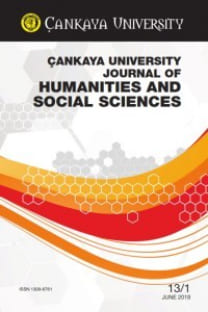Kehinde: Floundering between Two Opposite Worlds
<!--
/* Font Definitions */
@font-face
{font-family:"Cambria Math";
panose-1:2 4 5 3 5 4 6 3 2 4;
mso-font-charset:0;
mso-generic-font-family:roman;
mso-font-pitch:variable;
mso-font-signature:-536870145 1107305727 0 0 415 0;}
@font-face
{font-family:Calibri;
panose-1:2 15 5 2 2 2 4 3 2 4;
mso-font-charset:162;
mso-generic-font-family:swiss;
mso-font-pitch:variable;
mso-font-signature:-536858881 -1073732485 9 0 511 0;}
@font-face
{font-family:"Helvetica Neue";
panose-1:2 0 5 3 0 0 0 2 0 4;
mso-font-charset:0;
mso-generic-font-family:auto;
mso-font-pitch:variable;
mso-font-signature:-452984065 1342208475 16 0 1 0;}
@font-face
{font-family:Times;
panose-1:0 0 5 0 0 0 0 2 0 0;
mso-font-charset:0;
mso-generic-font-family:auto;
mso-font-pitch:variable;
mso-font-signature:-536870145 1342185562 0 0 415 0;}
@font-face
{font-family:TimesTrItalic;
panose-1:2 11 6 4 2 2 2 2 2 4;
mso-font-alt:"Times New Roman";
mso-font-charset:0;
mso-generic-font-family:roman;
mso-font-pitch:auto;
mso-font-signature:0 0 0 0 0 0;}
/* Style Definitions */
p.MsoNormal, li.MsoNormal, div.MsoNormal
{mso-style-unhide:no;
mso-style-qformat:yes;
mso-style-parent:"";
margin:0cm;
margin-bottom:.0001pt;
mso-pagination:widow-orphan;
font-size:12.0pt;
font-family:"Calibri",sans-serif;
mso-ascii-font-family:Calibri;
mso-ascii-theme-font:minor-latin;
mso-fareast-font-family:Calibri;
mso-fareast-theme-font:minor-latin;
mso-hansi-font-family:Calibri;
mso-hansi-theme-font:minor-latin;
mso-bidi-font-family:"Times New Roman";
mso-bidi-theme-font:minor-bidi;
mso-fareast-language:EN-US;}
p
{mso-style-priority:99;
mso-margin-top-alt:auto;
margin-right:0cm;
mso-margin-bottom-alt:auto;
margin-left:0cm;
mso-pagination:widow-orphan;
font-size:12.0pt;
font-family:"Times New Roman",serif;
mso-fareast-font-family:"Times New Roman";}
.MsoChpDefault
{mso-style-type:export-only;
mso-default-props:yes;
font-family:"Calibri",sans-serif;
mso-ascii-font-family:Calibri;
mso-ascii-theme-font:minor-latin;
mso-fareast-font-family:Calibri;
mso-fareast-theme-font:minor-latin;
mso-hansi-font-family:Calibri;
mso-hansi-theme-font:minor-latin;
mso-bidi-font-family:"Times New Roman";
mso-bidi-theme-font:minor-bidi;
mso-fareast-language:EN-US;}
@page WordSection1
{size:595.0pt 842.0pt;
margin:70.85pt 70.85pt 70.85pt 70.85pt;
mso-header-margin:35.4pt;
mso-footer-margin:35.4pt;
mso-paper-source:0;}
div.WordSection1
{page:WordSection1;}
-->
Buchi Emecheta’nın romanları
İngiltere’deki siyah kadınların yaşadığı çeşitli şekillerdeki dışlanmışlığın
kurgusallaşmış delilleridir, çünkü Londra’da yaşayan siyah bir kadın yazar
olarak Emecheta, yazılarında kendi hayatını yansıtır. Dahası, Emecheta’nın
eserleri, İngiltere’deki siyah kadınların deneyimlediği çifte-sömürülmeyi
yansıtır. Bir başka deyişle, bu yapı kadınları hem toplumsal, hem de özel
anlamda etkiler. Hem aile, hem de toplum içinde ayrıma maruz kalırlar. Aslında,
İngiltere’nin beyaz vatandaşları siyah insanların kendi toplumlarına girmesini
tam olarak kabul edip, içselleştirememiştir. Sonuç olarak da, siyahlar
kendilerini aşağılanmış ve dışlanmış hissederler. Özellikle de, siyah kadınlar
İngiliz toplumundaki beyaz erkek ve kadınlar tarafından aşağıda görülür.
Emecheta, Kehinde
adlı romanında,
çok-kültürlü bir toplumda iki-arada olan pozisyonlarından ötürü, geçiş
dönemi ve anlaşmazlık içinde olan insanları anlatır. Bu insanlar ne kendi
geleneksel değerlerine dönebilirler, ne de onları misafir eden toplumun modern
değerlerine tam olarak uyum sağlayabilirler. Bunun sonucunda da, iki zıt alanda
debelenirler.
Bu makalede, Emecheta’nın
“mesafe ve katılım” metotlarının kullanımı Kehinde ve kocası Albert’in Londra
ve Nijerya toplumlarına katılım ve yabancılaşmalarıyla değerlendirilecektir.
Dahası, Emecheta’nın Igbo toplumundaki kadınların durumlarını ‘ikili sömürü’nün
(aslında ‘üçlü-sömürü’ çünkü beyaz adam, beyaz kadın ve siyah adam
sömürüyor) öteki tarafı olarak göstermesi, yazarın Igbo toplumunu, kadınların
dışlanmasını kendi toplumlarının devamı için gerekli bir ilke olarak
benimseyen ataerkil bir toplum olarak betimlemesi yoluyla incelenecektir.
Kehinde: Floundering between Two Opposite Worlds
Buchi Emecheta’s novels are the fictionalised proofs that show the various forms of the marginalisation
of black women in England because, as a black woman writer living in London, she reflects her own life within
her writing. Furthermore, her works reflect the experience of the double colonisation that black women
experience in Britain. In that respect, it could be said that these women are ‘colonised’ both within the
British society outside, and the Igbo culture inside their household. In other words, this structure affects
women both in public and private senses: they are subject to discrimination in the family and in the society.
Actually, white citizens of England have not fully accepted and internalised the entrance of the black people
to their own society. As a result, black people feel humiliated and marginalised. Especially, the black
women are regarded as inferior both by the white males and females in British culture. Emecheta in her
novel Kehinde writes about the people who are in transition and in conflict because of their in-between
position within a multicultural society: they either cannot return to their own traditional values, or truly
join the host society’s modern values. As a result, they flounder between two opposite domains.
In this article, Emecheta’s usage of the methods of “distance and participation” both through
Kehinde’s and her husband Albert’s involvement and estrangement in London and Nigerian society will
be evaluated. Furthermore, Emecheta’s depiction of women’s position in Igbo society as the other side of
the ‘double colonisation’ of women (which actually means “triple colonisation” because of white men,
white women and black men’s exploiting black women) will be analysed through Emecheta’s depiction of
Igbo society as a patriarchal one which accepts the marginalisation of women as an essential principle of
the continuation of their society.
___
- Ashcroft, Bill, Gareth Griffiths, Helen Tifflin. Key Concepts in Postcolonial Studies (London: Routledge, 1998).
Berrian, Brenda F., “Her Ancestor’s Voice: The Ibeji Transcendence of Duality in Buchi Emecheta’s Kehinde,” in Marie Umeh (ed.), Emerging Perspectives on Buchi Emecheta (New Jersey: Africa World Press, 1996).
Dawson, Ashley, Mongrel Nation: Diasporic Culture and the Making of Postcolonial Britain (USA: University of Michigan Press, 2007).
Emecheta, Buchi, Head Above Water (Oxford: Heinemann, 1994).
Emecheta, Buchi, Kehinde (Oxford: Heinemann Publishers, 1994).
Fister, Barbara, Third World Women’s Literatures: a Dictionary and Guide to Materials in English (Westport:
Greenwood Press, 1995).
Hawley, John C., “Coming to Terms: Buchi Emecheta’s Kehinde and the Birth of a Nation,” Emerging
Perspectives on Buchi Emecheta, in Marie Umeh (ed.), (New Jersey: Africa World Press, 1996). McLeod, John, Beginning Postcolonialism (Manchester: Manchester University Press, 2000).
Nadaswaran, Shalini, “The Legacy of Buchi Emecheta in Nigerian Women’s Fiction,” International Journal of Science and Humanity, 2/2 (March 2012), p.146.
Nath, Prasad and Juri Dutta, “Africa and India in the novels of Dai and Emecheta.” Comparative Literature and Culture. 14/2 (2012), p.2.
Sizemore, Christine W., “The London Novels of Buchi Emecheta,” in Marie Umeh (ed.), Emerging Perspectives on Buchi Emecheta (New Jersey: Africa World Press, 1996).
Umeh, Marie (ed.), “Igbo Women and Culture.” Emerging Perspectives on Buchi Emecheta (New Jersey: Africa World Press, 1996).
